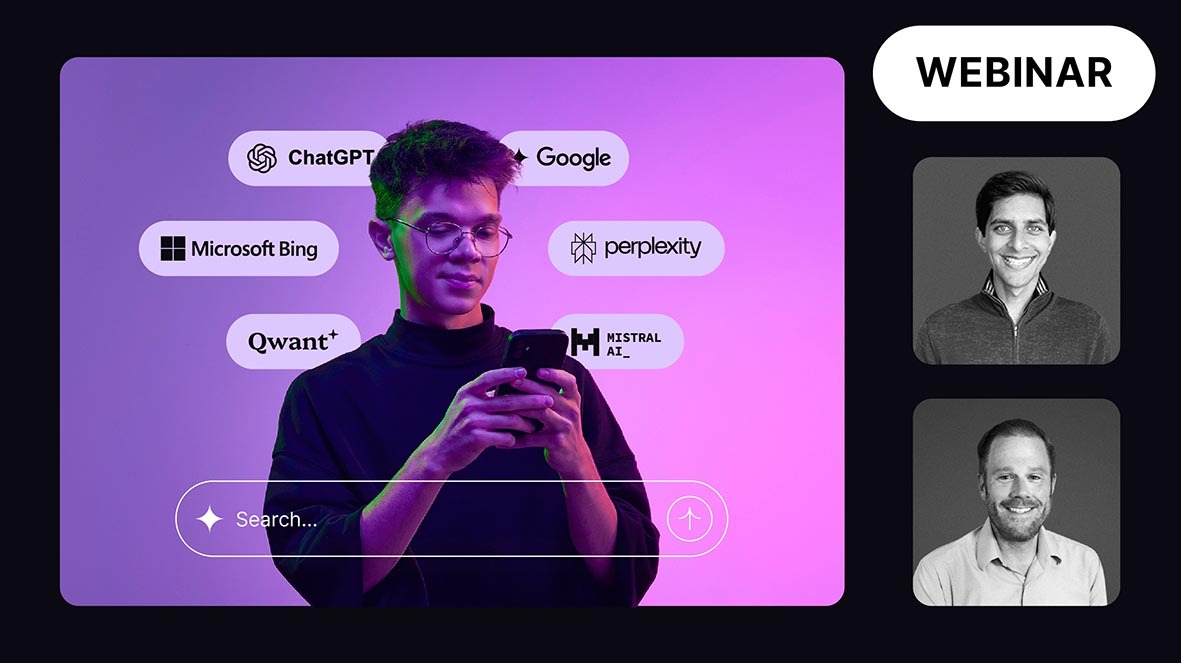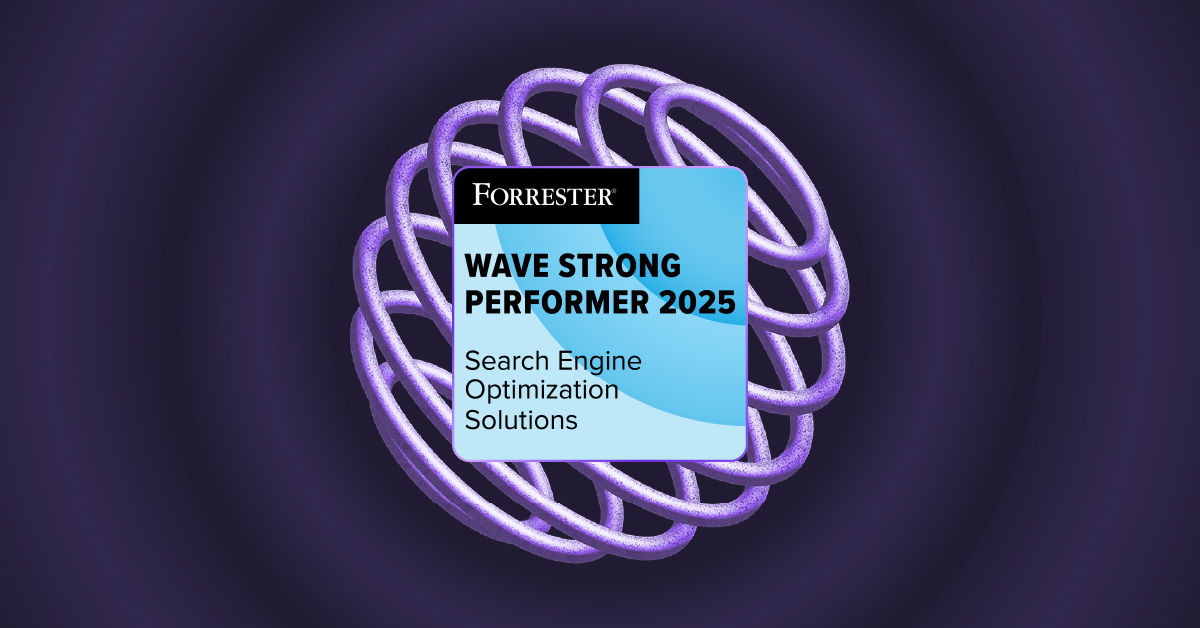Back to learn seo
What is “expanded search”?

What is expanded search?
“Expanded search,” sometimes called “decentralized search,” is the idea that for the first time, organic search is expanding its options for consumers beyond Google. For two decades, Google has been central to all things search, the default engine most consumers have relied on.
While top competitors like Bing and international search engines like Baidu and Yandex have existed for many years, the recent innovations in AI technology have introduced both new Google competitors and new ways of searching. The new search landscape encompasses AI platforms like Bing, ChatGPT Search, Perplexity, Meta AI, and more.
AI search provides fast, highly personalized responses, often in a conversational format. Most AI search platforms can refine their responses based on what they learn in conversation with a consumer, refining the prompt more and more to move them through the customer journey.
As consumers move to new platforms for search, brands must expand their visibility strategies beyond Google, ensuring they can be found everywhere people search.
Different platforms, different search experiences
How will the expanded search landscape affect consumer behavior? Let’s look at some examples.
Say your consumer is in the market for a new pair of hiking shoes. She lives in a rainy climate with forested hiking trails, so she has a specific need in mind. Here’s how her search could play out across different options.
With a traditional search experience, your consumer heads to a search engine, like Google or Bing, and types in the search box: “best women’s hiking shoes for wet leaves”.

A list of links and SERP elements appears. There may be a shopping carousel, sponsored links, forum discussions, and review sites. This requires her to manually evaluate every link, identify which one is best, explore the website, click back to the SERP, and expend time and effort to refine her query down to find the best product.
Google has developed its own GenAI answer to the competitive expanded search landscape. These AI-generated summaries, called AI Overviews, appear directly beneath the search box and surface knowledge from Google’s LLM that is paired with linked website citations.

Here, your consumer has searched for advice on choosing the right hiking shoe, surfacing an AI Overview with advice on the main factors to consider. Without needing to visit a website, she gets summarized information about how to choose a women’s hiking shoe for wet leaves, and is able to complete research directly on the Google SERP.
We’ve found that up to 47% of queries will result in an AI Overview, and keywords with commercial intent trigger them 19% of the time.
Bing
The traditional Bing SERP is very similar to Google’s, with shopping results, sponsored links, and organic rankings on the page. Again, in this situation, it’s up to the consumer to sift through all the information presented and decide which option is best.

Bing has also integrated generative AI into its search experience: clicking the “Copilot” tab will open Microsoft Copilot, a conversational AI assistant:

Your consumer’s original search query kicks off a chat in which Copilot summarizes what to look for in a hiking shoe and a list of products and their applicable features. She’s invited to “Message Copilot,” and the chat interaction can be refined according to the consumer’s wishes: she can learn more about the products listed, ask refining questions, seek comparisons, and more. In this search scenario, the consumer is able to complete much of the customer journey directly on the Copilot interface. If she gets enough information, the only time she’ll need to click into a website is to make a purchase.
ChatGPT
Your consumer is still looking for good hiking shoes. She heads to ChatGPT, one of the most popular AI search platforms right now. She’s met by a conversational question: “What can I help with?”

Asked to message ChatGPT, the consumer’s instinct is to use conversational language to respond, which encourages further context. She says, “I need a hiking shoe for women that has good traction on wet leaves.”
ChatGPT takes a moment to search the web for her. It replies with a helpful tip on what to look for in a hiking shoe with traction, then offers a list of recommended products, each accompanied by a contextually relevant description:

With this experience, the consumer does less work to achieve a better outcome faster. She states her need, ChatGPT assesses it for semantics and intent, does the job of searching and analyzing the top-ranking websites for her question, then generates useful details about the products and helpful tips that relate directly to her prompt.
Perplexity
Your consumer might choose a platform like Perplexity.ai. She’s greeted by an open question: What do you want to know? Like ChatGPT and Microsoft Copilot, it invites a conversational response.

Again, she says, “I need a hiking shoe for women that has good traction on wet leaves.”
Perplexity takes a moment to search the web for her. It finds a series of options and organizes them into a table that makes for quick and easy comparison across contextually relevant features like traction, waterproofing, and comfort. Below the table, each product is linked with an element that includes an image, review stars, website, and the option to “Buy with Pro.” Perplexity Shopping is a unique offering across AI search platforms: people can research, discover, compare, and ultimately purchase products directly on Perplexity’s platform, with no need to ever visit a brand’s website.

Changing consumer behaviors
New and existing Google competitors are seizing the opportunity to redefine what it means to search. These competitors are actively pioneering the expanded search landscape and creating tomorrow’s search experience. Alongside so many exciting advancements in AI technology, brands can trust that AI search is here to stay.
AI search is a more conversational, interactive process that’s fast, easy, and effective. Consumers don’t have to work as hard to get the answers they need when AI searches, summarizes, and guides them through the funnel toward purchase. It’s no wonder that the number of consumers using AI as their primary search tool is projected to grow from 13 million in 2023 to over 90 million by 2027.
What can brands expect in terms of changing behaviors and website impact?
- Lower human site traffic: Consumers will complete more of the customer journey directly in the AI platform, meaning fewer human visits to a brand’s website.
- Higher bot site traffic: With AI platforms doing the work of performing searches, finding and evaluating site content, and providing links and product suggestions, more and more site traffic will be from AI and search engine bots. A nuanced, data-driven AI governance plan is essential to control how bots find your site content.
- More qualified site traffic: The benefit of consumers completing their journey off-site: those that do visit have done the research and will be more qualified to convert.
- Off-site conversions: Platforms like Perplexity have already made it possible to bypass a website entirely to make a purchase, meaning some consumers may never need to visit a brand’s site to convert.
- Difficulty with traditional measurement and attribution: Tracking the customer journey across metrics like traffic, CTR, organic rankings, and more will become trickier as consumers complete more of their journey off-site. Brands may need to shift to analyzing log file data and visibility metrics like Share of Voice to measure success.
- Shifting search strategies: As the need to be found across AI search grows, brands will need to adjust their search strategies to encompass the entire expanded landscape, from Google to Bing to ChatGPT and beyond.
Which AI search platforms are popular?
The last three months of 2024 saw Google’s search engine market share drop below 90% for the first time in almost a decade. It’s clear that people are moving to other traditional engines, such as Bing, in addition to all the new AI platforms.
Here’s a list of popular AI search platforms today:
- Google AI Overviews: AI-generated summaries in Google search results, directly under the search box.
- Google Gemini: Google’s GenAI chatbot for conversational search and AI assistance on Android and other platforms.
- Microsoft Copilot: AI assistant in Microsoft apps and Bing, similar to Google AI Overviews.
- ChatGPT Search: OpenAI’s conversational AI tool providing quick answers with links, powered by Bing’s search index.
- Perplexity: A conversational AI “answer engine,” also featuring e-commerce capabilities with Perplexity Shopping.
- Apple Intelligence: AI features integrated into Apple devices, including ChatGPT functionality.
- Meta AI: AI assistant available in Facebook, Instagram, WhatsApp, and Messenger.
- Mistral le Chat: Conversational AI work assistant with web search capabilities using Mistral models.
- TikTok: A preferred search tool for Gen Z and Gen Alpha, blending Google results into responses.
How to optimize for AI search
All forms of search rely first and foremost on a traditional search engine index to provide content and links to consumers. Focusing on getting your website found and indexed in the databases used by AI platforms is critical.
Today, most AI platforms rely on the robust Bing or Google indexes to find content and links for consumers. Google protects its search index information and only offers exclusive partnerships, such as with Meta AI, to provide results. Many AI platforms tap into Bing’s Web Search API, which provides more democratic access to traditional search engine rankings. Some platforms, such as Meta and ChatGPT, are even beginning to compile their own search engine indexes to reduce dependence on third-party data.
Because of this, optimizing to appear in AI search requires the following:
- Ensuring site content is indexed by Google, Bing, and other top engines via sitemap generation, pushing content directly to Bing, and protocols like IndexNow
- Strong SEO fundamentals that support traditional rankings
- Understanding the role of AI crawler bots and developing a governance plan for how they access your site
- Using existing organic search data to predict what consumers will ask AI platforms
- Automating and scaling site optimizations with a solution like Botify Activation
Research shows correlations between brand mentions and linked citations in AI search, and ranking content in traditional search. Optimizing for traditional search and maintaining strong technical site health are key for appearing in AI search today.
.svg)




.svg)

_Webinar_Banner%201%20(1).png)
.svg)
.svg)

